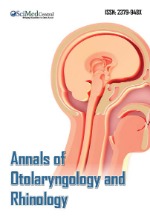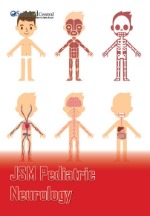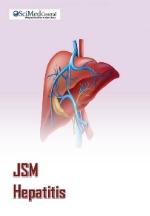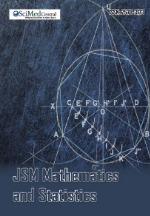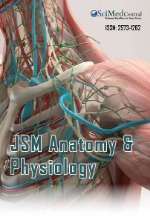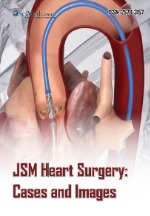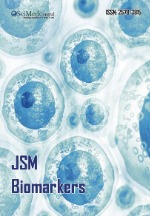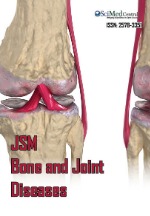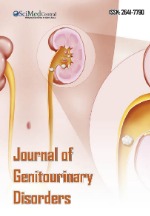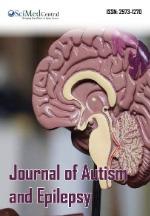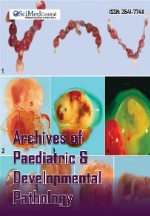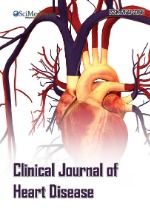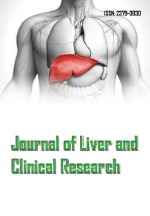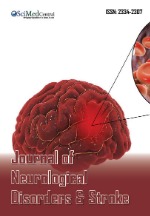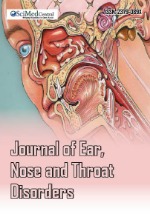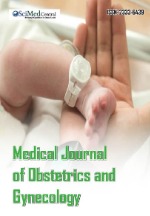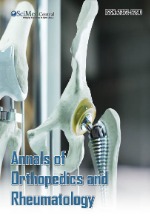Head and Neck Metastases from Other Primary Sites: Our Experience
- 1. Otolaryngology and EMT Unit, INT IRCCS Foundation G Pascale, Italy
- 2. Department of Neurosciences, Reproductive and Odontostomatological Sciences, University Federico II, Italy
- 3. Medical and Experimental Head and Neck Oncology Unit, INT IRCCS Foundation G Pascale, Italy
- 4. Scuola Superiore Meridionale- CTO, Italy
- 5. Department of Neurosciences, Reproductive and Odontostomatological Sciences, University Federico II, Italy
- 6. Otolaryngology and EMT Unit, INT IRCCS Foundation G Pascale, Italy
- 7. Otolaryngology and EMT Unit, INT IRCCS Foundation G Pascale, Italy
Abstract
Head-neck carcinoma (HNC) affects more than 500000 people in the world, but Head-neck metastases (HNM) are a rare feature in the clinical practice, especially if they are secondary to other primitive such as different solid tumors. Diagnosis can be difficult and origin sites can be different, so patient management has many critical points. We report our experience in order to demonstrate we should not underestimate the possibility to study different site of origins when in presence of HNM. The most frequent HNM localization in our experience was laterocervical region with asymptomatic swelling as most common clinical manifestation. Lung was most frequent origin site, followed by mammary gland. Prognosis of HNM patients is often poor, so diagnosis should be tempestive and treatment assigned to a multidisciplinary team.
KEYWORDS
- Head and neck metastases
- Head and neck carcinoma
- Global assessment
- Multidisciplinary evaluation
- Oncology
CITATION
Maglione M, Togo G, Borriello G, Perri F, Camilla D’Orsi PC, et al. (2024) Head and Neck Metastases from Other Primary Sites: Our Experi- ence. JSM Head Face Med 5(1): 1016.
BACKGROUND
Head-neck carcinoma (HNC) affects more than 500000 people in the world. Normally HNC have a squamous histology and arise from the first tract of the aero-digestive area (2-3). Rarely, in head and region occur metastases from other primitives. Nevertheless, spreading in Head and Neck regions from other anatomical sites is an uncommon feature [1]. As defined by Meyer and Shklar in 1965, proposed three features able to identify a distant metastases, namely: 1) primary tumor site, that can be known or unknown (UPT); 2) primary tumor and metastasis histology, and as important feature to assess, both histologies (primary tumor and metastasis) must be identical; finally 3) primary tumor and metastases must be separated by some non-tumoral tissue [2].
Male and female are equally affected by head-neck metastases (HNM) [3] but primary localizations are different. The most common primary tumors in male are lungs, kidneys, liver and prostate; in female the most common primary tumors are breast (41%), genital organs, kidneys and gastrointestinal treat [4]. These represent 70% of primary sites for head and neck metastasis [5] but any other primitive sites have been described.
Ocular and paranasal sinuses tumors are extremely rare [4,6]. Facial cutaneous metastases occur in less than 0.5 % of atients with metastatic cancer [7].
The majority of head and neck metastases are localized within the lymph nodes, followed by bones and salivary glands. Furthermore, head and neck metastases can be the first manifestation of an occult cancer in 25-30% of patients [8,9].
Due to their rarity and the complexity of the anatomical district involved, head and neck metastases represent a challenge [1]. Numerous single case reports and small series of metastasis in the head and neck region from other localization are available in the literature.
The aim of this study is firstly to report our experience with HNM from other sites and subsequently to analyze the percent of the primitive sites
PATIENTS AND METHODS
This study is a retrospective review of the clinical records of 20 patients surgically treated for head and neck metastasis (HNM) from July 2017 to July 2024 at the Department of Maxillofacial Surgery of National Tumors Institute IRCCS “Pascale” in Naples.
Each patient had a follow-up period of 5 months at least.
Epidemiological information, locations of both the primary tumors and the metastases, symptoms, treatment modalities, and follow-up data were acquired from the patients’ charts.
All of patients were evaluated, for the first time, at the otolaryngology Unit of our institute.
Our cohort was composed by 20 patients (affected by HNM), among which 8 were women and 12 were men, with a median age of 59 years [Table 1].
Table 1. Patient’s characteristics
|
Pz |
Sex |
Age |
History |
Metastasis region |
Clinical presentation |
Primary disease |
Surgical procedures |
|
1 |
F |
58 |
Radical mastectomy surgery 5 years ago |
Scalp |
Ulcerated painful scalp lesion with hemorrhagic spots |
Mammary cancer |
Excision biopsy |
|
2 |
F |
60 |
No known history of any malignant disease |
Retroauricolar skin |
Painful swelling |
Mammary cancer |
FNAB |
|
3 |
M |
64 |
Lung lobectomy surgery 2 years ago |
Laterocervical |
Asymptomatic swelling |
Lung cancer |
FNAB |
|
4 |
M |
72 |
Chemotherapy treatment in course and lung lobectomy 3 years ago |
Laterocervical |
Asymptomatic swelling |
Lung cancer |
FNAB |
|
5 |
F |
48 |
Chemotherapy treatment in course and lung lobectomy 7 months ago |
Laterocervical |
Painful swelling |
Lung cancer |
FNAB |
|
6 |
M |
62 |
Chemotherapy for lung adenocarcinoma diagnosed 5 months before swelling observation |
Laterocervical |
Asymptomatic swelling |
Lung cancer |
FNAB |
|
7 |
M |
69 |
Chemotherapy for lung adenocarcinoma diagnosed 2 years ago |
Laterocervical |
Asymptomatic swelling |
Lung cancer |
FNAB |
|
8 |
M |
56 |
Sigmoid colon dissection surgery 3 years ago |
Laterocervical |
Painful swelling |
Sigmoid colon cancer |
FNAB |
|
9 |
M |
52 |
Nephrectomy and retroperitoneal lymph node dissection 7 years ago |
Laterocervical |
Asymptomatic swelling |
Kidney cancer |
FNAB |
|
10 |
M |
57 |
Hemicolectomy 13 months ago |
Nose |
Ulcerated painful nose lesion |
Colon cancer |
Incisional biopsy |
|
11 |
F |
61 |
Patient in chemioterapic treatment for inoperable ovarian carcinoma |
Laterocervical |
Painful swelling |
Ovarian cancer |
FNAB |
|
12 |
M |
65 |
No known history of any malignant disease |
Submandibular gland |
Asymptomatic swelling |
Kidney cancer |
FNAB |
|
13 |
F |
44 |
Modified radical mastectomy 1 year ago |
Jaw |
Painful necrotic lesion |
Mammary cancer |
Incisional biopsy |
|
14 |
F |
59 |
No known history of any malignant disease |
Laterocervical |
Asymptomatic swelling |
Ovarian adenocarcinoma |
FNAB |
|
15 |
F |
62 |
Partial mastectomy 4 years ago |
Jaw |
Painful swelling |
Mammary cancer |
Incisional biopsy |
|
16 |
M |
62 |
No Known history of malignant disease |
Laterocervical and larynx lesion |
Painful swelling |
Lung adenocarcioma |
Laterocervical and larynx biopsy |
|
17 |
M |
64 |
Chemotherapy treatment and lung lobectomy 2 years ago |
Scalp |
Ulcerated painful scalp lesion |
Lung cancer |
FNAB |
|
18 |
M |
58 |
No known history of any malignant disease |
Laterocervical |
Asymptomatic swelling |
Kidney cancer |
FNAB |
|
19 |
F |
54 |
Radical mastectomy 3 years ago |
Jaw |
Painful necrotic lesion |
Mammary cancer |
FNAB |
|
20 |
F |
60 |
Lung lobectomy 1 year ago |
Laterocervical |
Asymptomatic swelling |
Lung adenocarcioma |
FNAB |
The staging assessment consisted in:
- Fine Needle Aspiration Biopsy (FNAB) of all lesion was performed to determinate the nature of the mass. All lesions were histologically proven to be distant metastases in the head and neck region, from distant primary localization.
- Medical history was collected and a standardized examination was performed in all patients. This included inspection, palpation, percussion, detection of pain and ophthalmologist examination for orbital tumors or temporomandibular joint examination in patients in which jaw was involved.
- All patients performed a chest x-ray, a neck and salivary gland ultrasonography and a fibroscopy.
- Each patients was evaluated by Multidisciplinary Team, consisting in the Oncologist, radiation Oncologist, surgeon and radiologist.
RESULTS
Data of 20 patients were included in our analysis, namely 12 males and 8 females with a median age of 59 years (range 44 to 72).
Pathological assessment revealed a primitive breast carcinoma in 5 patients, lung cancer in 8 patients, kidney cancer in 3 patient, ovarian cancer in 2 patients, colon cancer in one patient and sigmoid bowl cancer in 1 patient.
Primary tumor was previously known in 15 cases (75%). Five patients (25%) had unknown history of malignant disease.
The most frequent HNM localization was laterocervical region, involved in 11 cases. The Jaw was interested in 3 cases, scalp in 2 case, retroauricolar skin in 1 case, submandibular gland in 1 case, nose in 1 case, and in 1 case laterocervical and larynx concomitant.
Most common clinical manifestation was an asymptomatic swelling (9 cases) (45%), followed by a painful swelling presented by 7 patients (44%). Three patients had an ulcerated skin lesion (scalp and nose), and two patient had a necrotic painful lesion in the jaw.
Fifteen patients (75%) had their therapy-program performed on the basis of FNAB and they were addressed to chemio-radio therapy program, five patients (25%) underwent incisional or excisional surgical biopsy and one case lymphonodal node biopsy and larynx biopsy.
DISCUSSION
HNM are rarely seen in the clinical practice: Head/Neck metastases from other primitives comprise about only 1% of all Head and Neck malignancies. Shen [8] et al., reports it as 0,21% with 19 cases above the 9239 studied [9]. In previous studies this value was reported as higher as shown by Stypulkowska et al., that in 1979 reported it to be 3,2% [10].
The way through malignancies spread to head and neck region is not clearly understood, but hematogenous pathways seem to be more commonly involved then lymphatic pathways. But this pathway should implicate a higher incidence of lung metastasis. This latter feature doesn’t match with the evidence of HNM incidence to be independent from lung metastasis, so an alternative pathway is considered to be the Betson’s plexus (valveless vertebral venous plexus) [2,9,11-13].
Inflammation may play an important role in metastasis establishment. Macrophages and interleukin production are probably involved, but the clear mechanisms are still not known [14,15].
Any malignant disease can spread to head and neck region, but lungs, kidneys and prostate are the most frequent primary localizations in men, and breast, genital organs, kidneys and gastrointestinal treat in women [4,5].
However, in the Eastern Countries some authors reported breast cancer not to be the most common primary site in women with HNM [9]. Nishimura et al., highlighted that the choriocarcinoma is the most common primary site metastasizing in Head and Neck region in Japanese women [16] and Lim et al., identifies thyroid carcinoma as the main primary tumor in Korean women [17].
According to literature HNM occurs more frequently between fifth and seventh decade of life [1,18,19]. By the way the mean age of our cohort is clearly in this range resulting 59 years.
HNM diagnosis can be difficult and requires a close cooperation between surgeon and oncologist. Challenge is made hard by the complex anatomy, the unspecific symptoms, the variety of differential diagnoses and rarity of the condition [1].
The most common localizations of HNM are the oral cavity, condyle, orbit, parotid gland and the cervical region. Mandible is involved in 60-80 % of HNM in oral cavity. Symptoms are a specific and often represented by a swelling, with or without pain, soft tissues ulceration, sensory disturbances, dysphagia, phatological fractures, temporomandibular joint disorders and progressive trismus, and ophthalmology all disorders in case of orbit area envolvement [1]. By the way the most common clinical manifestation in asymptomatic swelling [1,8,20].
First step in identifying HNM is an accurate and complete anamesis, followed by physical examination. Most of the lesions can be seen during the inspection or with endoscopic exam. PET/ CT is the gold imaging method to evaluate systemic metastasis and mainly the primitive site. Informations obtained by this exam can be integrated by a magnetic resonance imaging (MRI) with the aim to plan the following diagnostic/therapeutic iter [8,21].
Prognosis of HNM patients is poor so treatment is always systemic and often palliative. HNM show a better prognosis in the case of a single lesion which can be treated with surgery and/or radiotherapy [22,23].
REFERENCES
- Baum SH, Mohr C. Metastases from distant primary tumours on the head and neck: clinical manifestation and diagnostics of 91 cases. Oral Maxillofac Surg. 2018; 22: 119-128.
- SMEYER I, SHKLAR G. MALIGNANT TUMORS METASTATIC TO MOUTH AND JAWS. Oral Surg Oral Med Oral Pathol. 1965; 350-62.
- R I F van der Waal, J Buter, I van der Waal. Oral metastases: report of 24 cases. Br J Oral Maxillofac Surg. 2003; 41: 3-6.
- Tracy JC, Mildenhall N, Wien RO, Leary MO. Breast cancer metastases to the head and neck: Case series and literature review. Ear Nose Throat J. 2017; 96: E21-E24.
- Beena V, Panda S, Heera R, Rajeev R. Multiple metastatic tumors in the oral cavity. J Oral Maxillofac Pathol. 2011; 15: 214-8.
- Bart?omiej Kami?ski, Joanna Kobiorska-Nowak, Stanis?aw Bie?. Przerzuty nowotworowe do jam nosa i zatok przynosowych znarzadów odleg?ych [Distant metastases to nasal cavities and paranasal sinuses, from the organs outside the head and neck]. Otolaryngol Pol. 2008; 62: 422-5.
- Dholakia S, Hashimi Y. Facial cutaneous metastasis of colorectal adenocarcinoma. BMJ Case Rep. bcr2013009875. 2013.
- ?ahin B, Doruk C, Celik M, Oztruk E, Gunes S, Kiyak OE. Atypical Metastasis to the Head and Neck Region: An Analysis of 11 Patients. Turk Arch Otorhinolaryngol. 2018; 56: 210-216.
- Shen ML, Kang J, Wen YL, Ying WM, Yi J, Hua CG. et al. Metastatic tumors to the oral and maxillofacial region: a retrospective study of 19 cases in West China and review of the Chinese and English literature. Oral Maxillofac Surg. 2009; 67: 718-37.
- Stypulkowska J, Bartkowski S, Panas M, Zaleska M. Metastatic tumors to the jaws and oral cavity. J Oral Surg. 1979; 37: 805-8.
- Aniceto GS, Penin AG, Pages RDLM, Moreno JJM. TUMors metastatic to the mandible: analysis of nine cases and review of the literature. J Oral Maxillofac Surg. 1990; 48: 246-51.
- Okada H, Kamino Y, Shimo M, kitamura E, Katoh T, Nishimura H, et al. Metastatic hepatocellular carcinoma of the maxillary sinus: a rare autopsy case without lung metastasis and a review. Int J Oral Maxillofac Surg. 2003; 32: 97-100.
- Hirshberg A, Leibovich P, Buchner A. Metastases to the oral mucosa: analysis of 157 cases. J Oral Pathol Med. 1993; 22: 385-90.
- Robinson- Smith TM, Isaacsohn Idit, Mercer CA, Zhou Mingfu, Roojien VN, Husseinzadeh N, et al. Macrophages mediate inflammation- enhanced metastasis of ovarian tumors in mice. Cancer Res. 2007; 67: 5708-16.
- Auguste P, Lucia Fallavollita, Wang N, Burnier J, Bikfalvi A, Brodt P. Auguste P. The host inflammatory response promotes liver metastasis by increasing tumor cell arrest and extravasation. 2007; 170: 1781-92.
- Nishimura Y. Yakata H, Kawasaki T, Nakajima T. Metastatic tumours of the mouth and jaws. A review of the Japanese literature. J Maxillofac Surg. 1982; 10: 253-8.
- Lim SY, Kim SA, Ahn S-G , Kim S-G, Kim H K, Hwang HK, et al. Metatstatic tumors to the jaw and oral soft tissues: A retrospective analysis of 41 korean patients. Int J Oral Maxillofac Surg. 2006; 35: 412-5.
- Jham BC, Salama AR, McClure SA, Ord AR. Metastatic tumors to the oral cavity: a clinical study of 18 cases. Head Neck Pathol. 2011; 5: 255-8.
- Frazen A, Pfaltz M. Parotid tumors of non-glandular origin: local and distant metastases in the parotid gland. Laryngorhinootologie.1997; 76: 735-9.
- RE Friedrich, Abadi M. Distant metastases and malignant cellular neoplasms encountered in the oral and maxillofacial region: analysis of 92 patients treated at a single institution. Anticancer Res. 201; 30: 1843-8.
- Hirshberg A, Shapiro AS, Berger R, Kalpan I. Metastatic tumours to the oral cavity - pathogenesis and analysis of 673 cases. Oral Oncol. 2008; 44: 743-52.
- Jatti D, Puri G, Aravinda K, Dheer D S. An atypical metastasis of renal clear cell carcinoma to the upper lip: a case report. J Oral Maxillofac Surg. 2015; 73: 371.
- RJJ Gottlieb. Paradoxical spread of renal cell carcinoma to the head and neck. Laryngoscope.1998; 108: 1301-5.
- Trajkovic M, Zivkovic N, Krasic D. Metastatic tumors to the head and neck region: a fifteen-year-long retrospective study. 2016; 20: 253.


